Enhancing Soft Skills for DevOps Engineers: Essential Non-Technical Skills to Thrive
Influencing Persuasion and Leadership
Persuasion versus Manipulation
Welcome back, SoftSkills students! I’m Michael Forrester. In this lesson, we’ll dive into the critical difference between persuasion and manipulation in leadership—and explore why mastering ethical influence is essential for high-performing DevOps teams.
Why This Distinction Matters
Leadership impact hinges on integrity. Persuasion builds trust and collaboration by being honest, transparent, and empathetic. Manipulation, in contrast, relies on deception and self-interest, which erodes morale and team cohesion.
Note
Influencing with integrity means serving both the individual and the organization—creating a win-win environment.
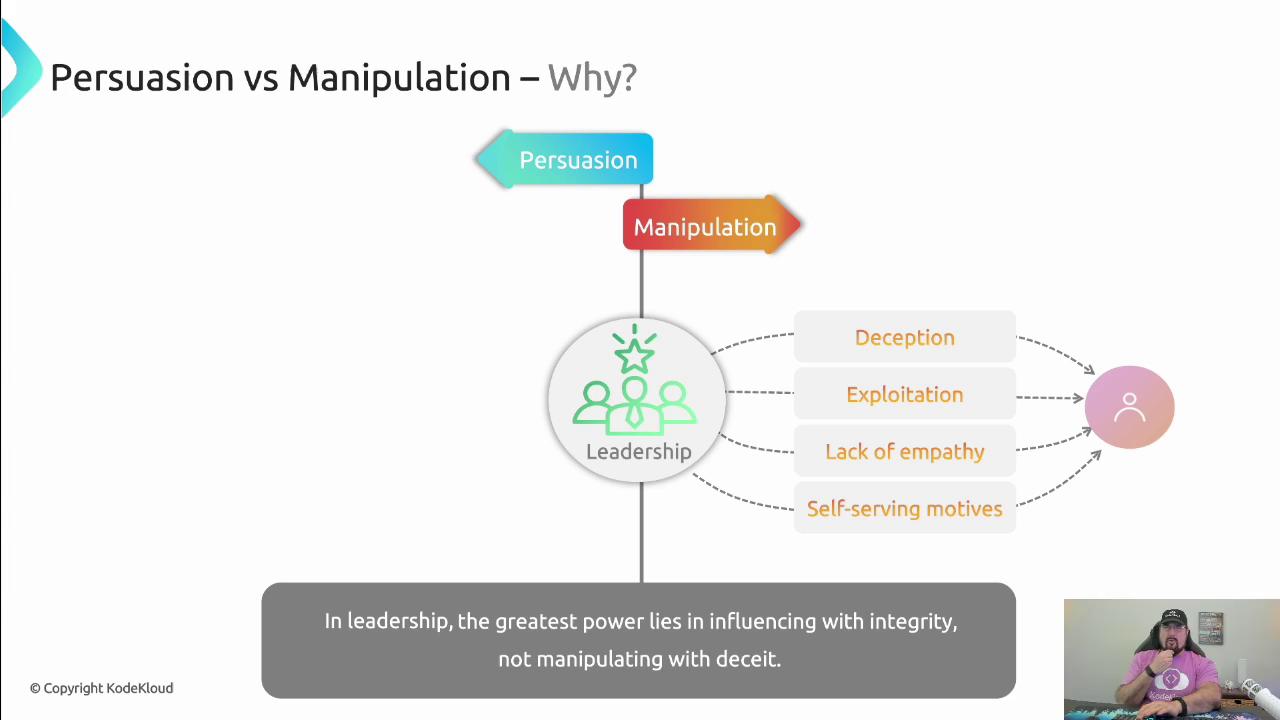
Defining Persuasion and Manipulation
Persuasion
Persuasion is an ethical approach to influence. Key characteristics include:
- Data-driven arguments with transparent metrics
- Open communication and clear rationale
- Empathy and respect for autonomy
- Mutual benefit and shared ownership
Example
Encourage a teammate to earn a certification by presenting statistics on career growth, discussing company sponsorship, and aligning on timelines.
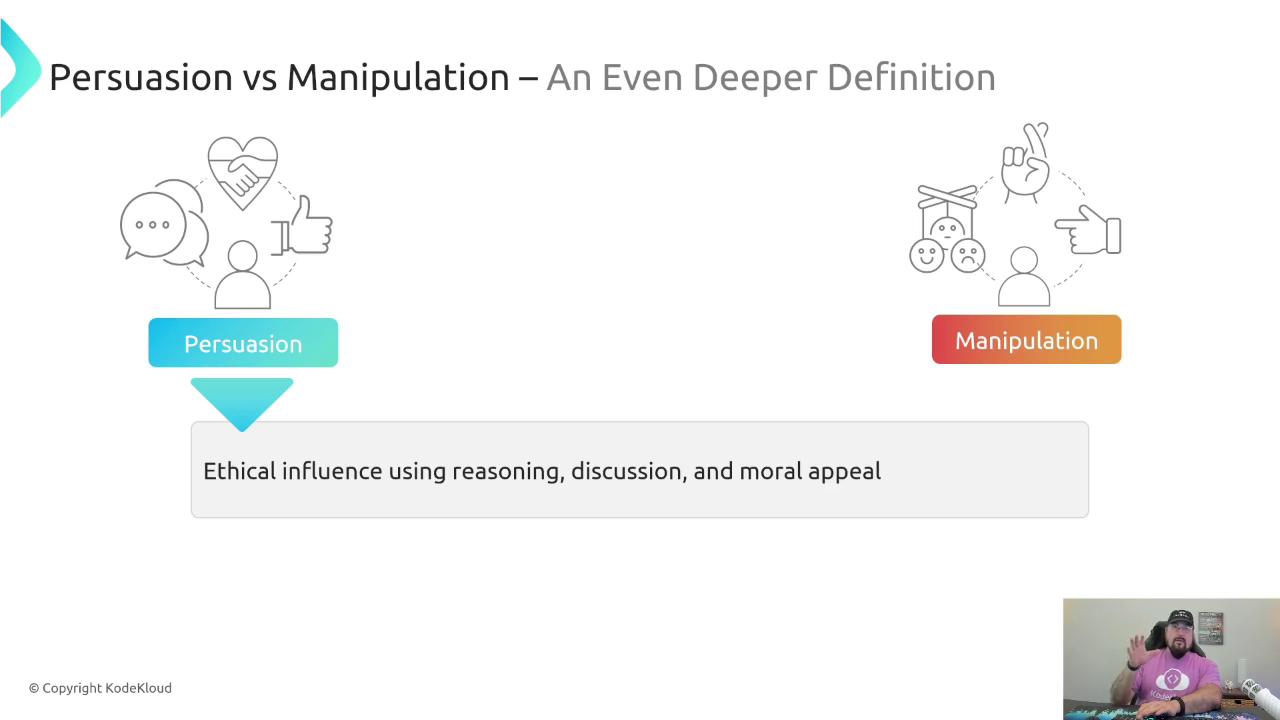
Manipulation
Manipulation leverages coercion and deception for personal gain. Typical tactics are:
- Exploiting fear, guilt, or obligation
- Cherry-picking or omitting crucial information
- Pressuring without transparency
- Prioritizing self-interest over team success
Warning
Manipulative tactics damage trust and create toxic work environments.
![]()
The Bridge Metaphor
Picture persuasion as a sturdy bridge built on honesty, transparency, respect, mutual benefit, and empathy. Manipulation is a collapsing path of deception, coercion, exploitation, and selfishness.
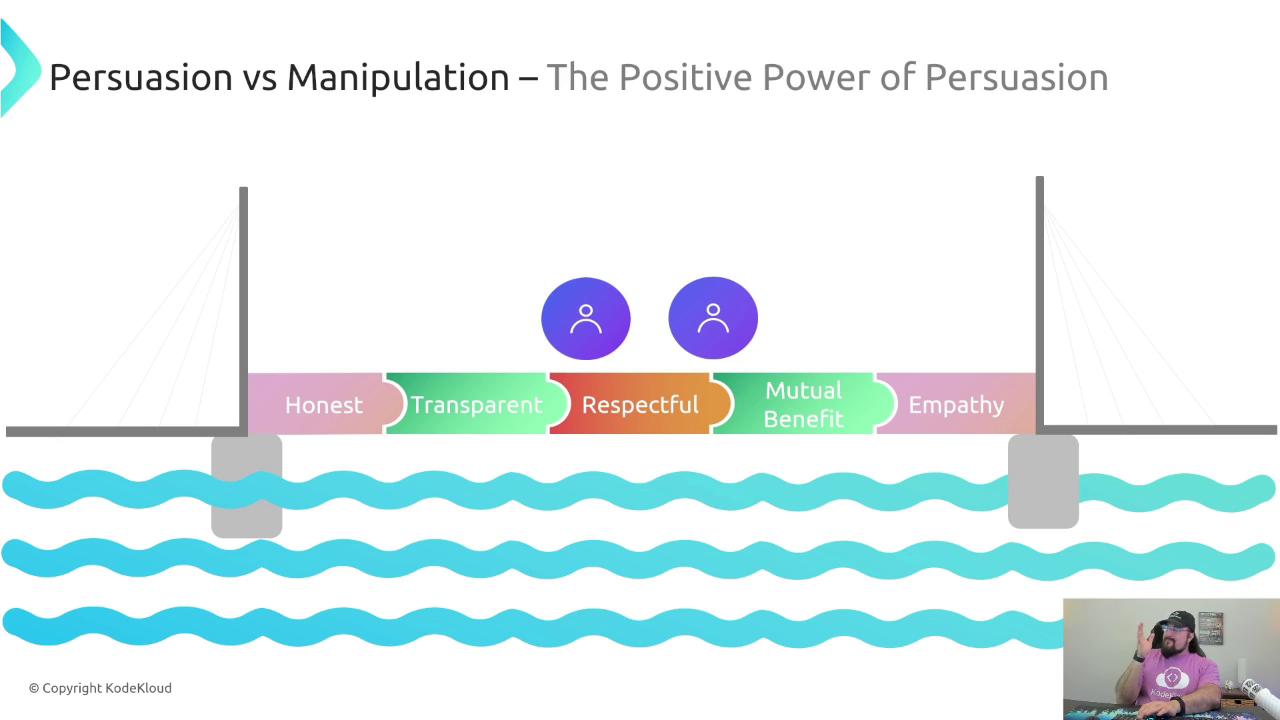
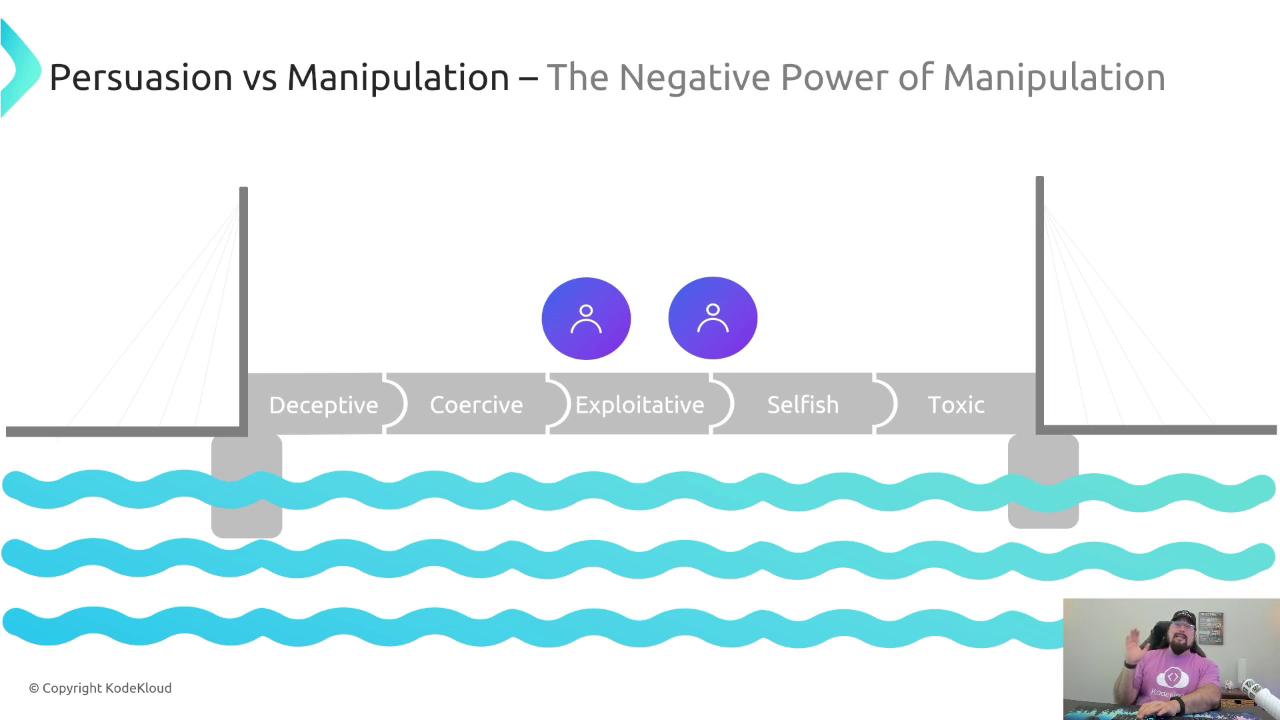
Key Differences
| Aspect | Persuasion | Manipulation |
|---|---|---|
| Decision Drivers | Data, logic, and empathy | Fear, guilt, and misinformation |
| Respect for Autonomy | Empowerment and choice | Control and coercion |
| Transparency | Open, honest communication | Hidden agendas and selective disclosure |
| Outcome Focus | Shared success | Self-interest |
A persuasive leader empowers informed decisions. A manipulative leader demands blind compliance, undermining scalability and trust.
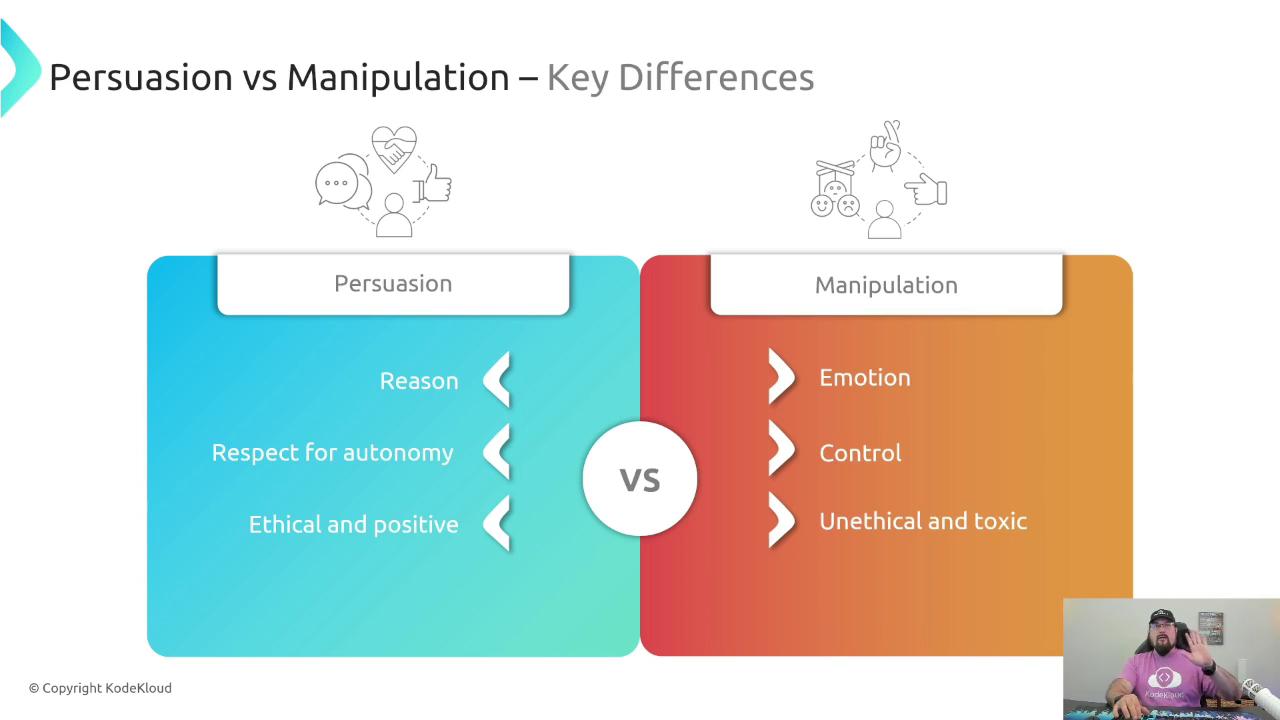
Examples of Persuasion
- Prioritizing projects by demonstrating ROI and clear objectives
- Facilitating cross-team collaboration between Dev, Ops, and Cloud groups
- Rolling out new tools (AI, Kubernetes, containers, virtualization) with pilot data and training plans
- Gaining stakeholder buy-in for experiments by sharing metrics and methodologies
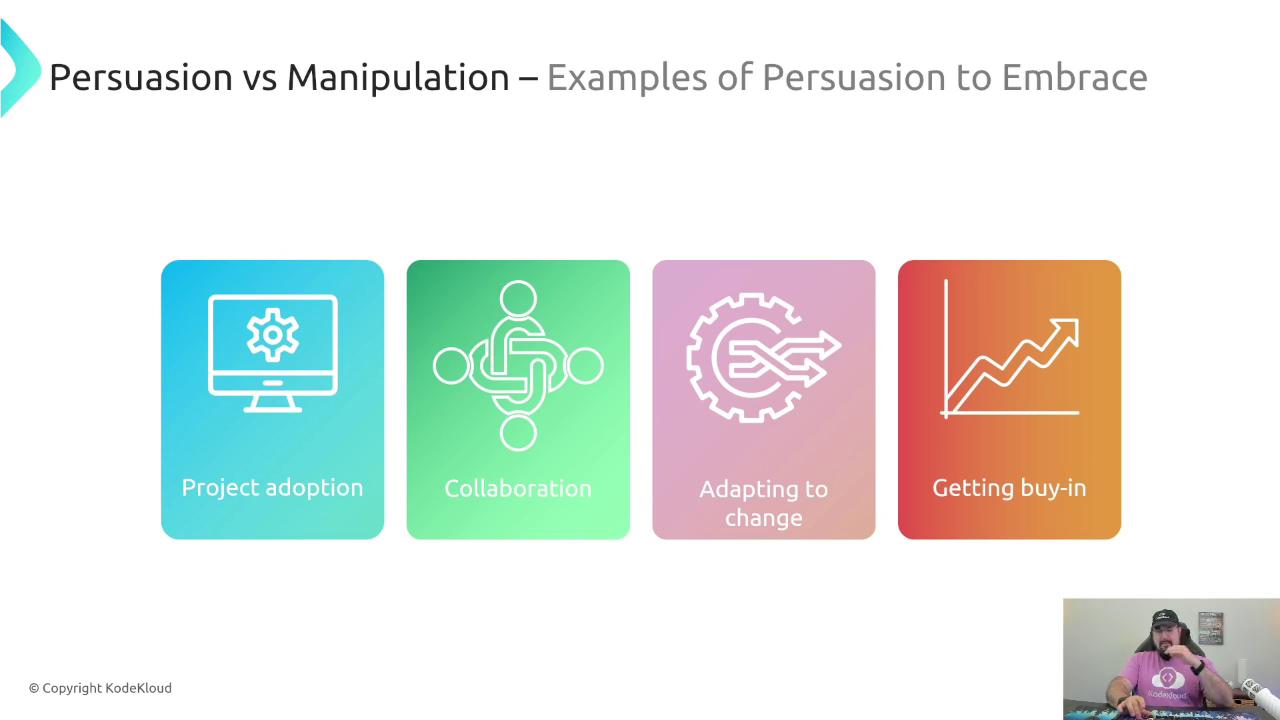
Cultivating Ethical Influence
To build a culture of persuasion:
- Lead by example and model integrity.
- Promote transparency in goals and data.
- Encourage data-driven, informed decisions.
- Respect and empower individual autonomy.
Even when opinions diverge, clear rationale lets teams disagree and still move forward together.
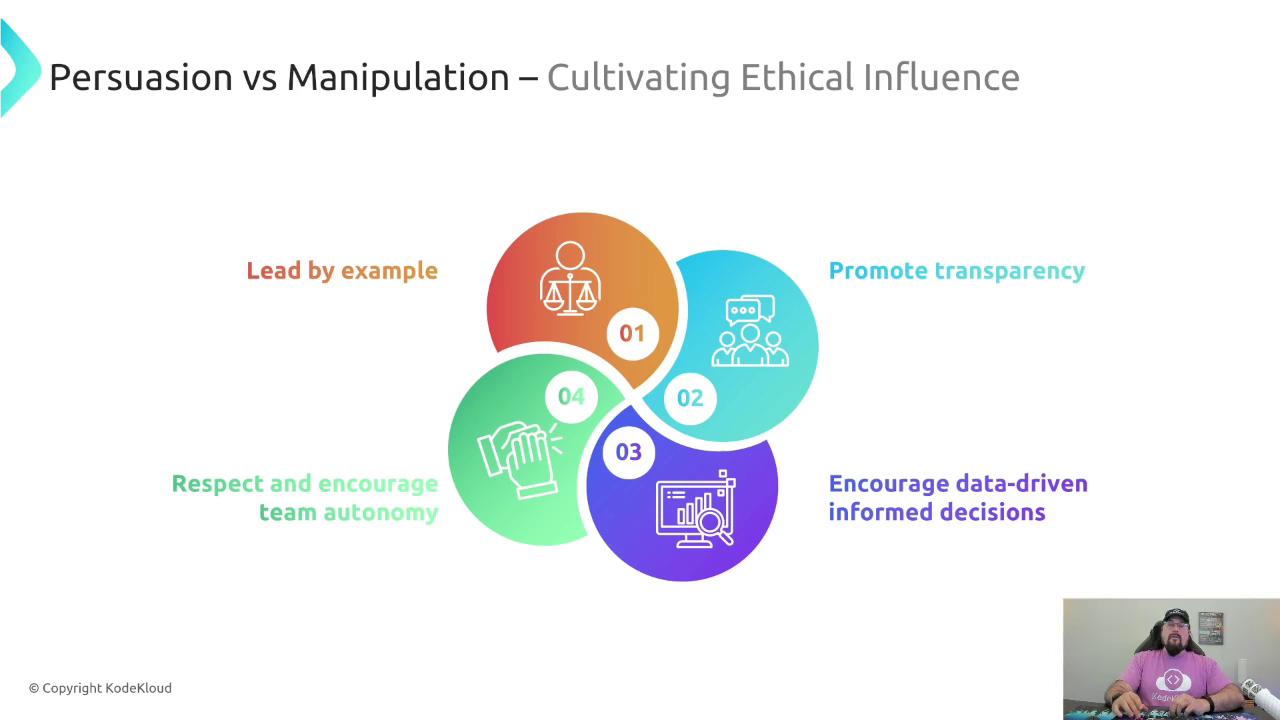
Summary
In DevOps leadership, persuasion fosters collaboration and trust, whereas manipulation breeds dysfunction. We’ve covered the hallmarks of each approach, real-world examples, and actionable strategies for ethical influence.
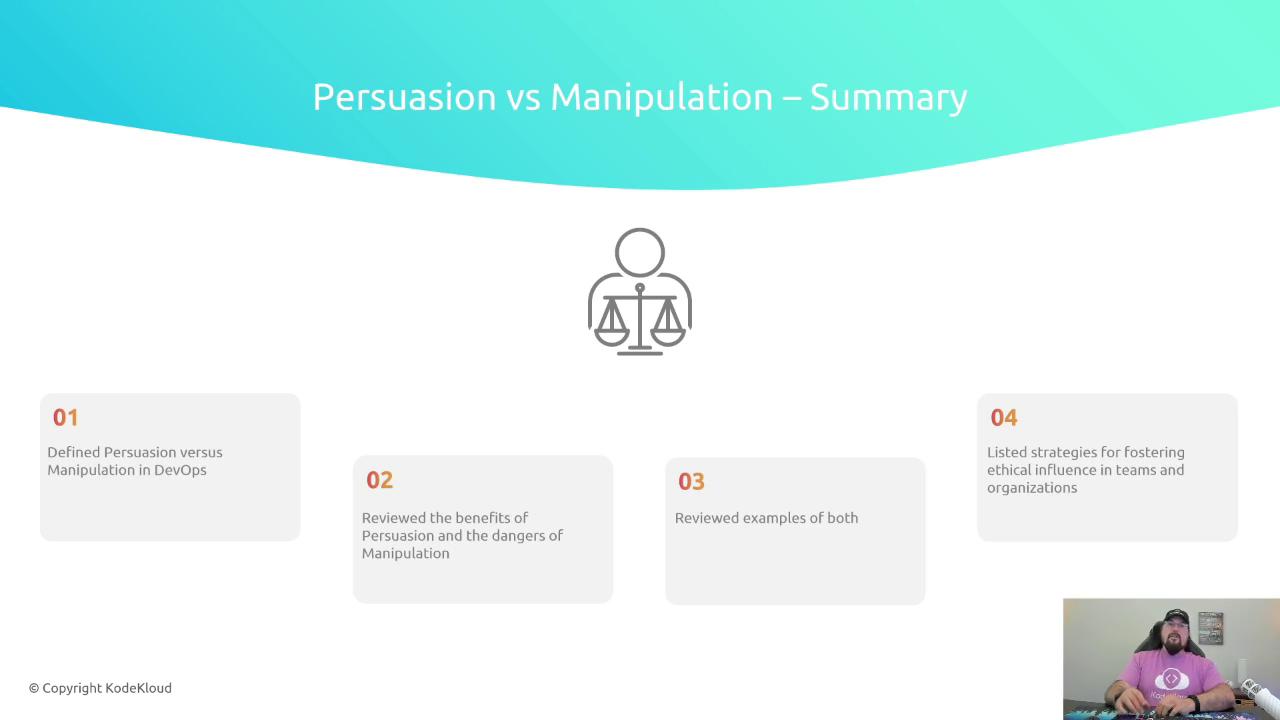
References
Watch Video
Watch video content